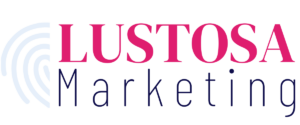“Freebie” – Have you ever grabbed a coupon offering a FREE coffee—even though you don’t drink coffee?
What about the FREEBIE you’ve accumulated—the T-shirt from the radio station, the magnetic calendar your real estate agent sends you each year?
It’s no secret that getting something free feels very good. Zero is not just another price, it turns out. Zero is an emotional hot button—a source of irrational excitement.
Most transactions have an upside and a downside, but when something is FREE! we forget the downside, FREEBIE! gives us such an emotional charge that we perceive what is being offered as immensely more valuable than it really is. Why? It’s because humans are intrinsically afraid of loss. There’s no visible possibility of loss when we choose a FREE! item.
I recently read this story in a book I was reading. “A few years ago, Amazon.com started offering free shipping of orders over a certain amount. Someone who purchased a single book for $ 16.95 might pay an additional $ 3.95 for shipping, for instance. But if the customer bought another book, for a total of $ 31.90, they would get their shipping FREE!
Some of the purchasers probably didn’t want the second book but the FREE! shipping was so tempting that to get it, they were willing to pay the cost of the extra book. The people at Amazon were very happy with this offer, but they noticed that in one place—France—there was no increase in sales.
Is the French consumer more rational than the rest of us? Unlikely. Rather, it turned out, the French customers were reacting to a different deal. Instead of offering FREE! shipping on orders over a certain amount, the French division priced the shipping for those orders at one franc. This doesn’t seem very different from FREE! but it was. In fact, when Amazon changed the promotion in France to include free shipping, France joined all the other countries in a dramatic sales increase.
America Online (AOL) had a similar experience several years ago when it switched from pay-per-hour service to a monthly payment schedule (in which you could log in as many hours as you wanted for a fixed $ 19.95 per month). In preparation for the new price structure, AOL geared up for what it estimated would be a small increase in demand. What did it get? An overnight increase from 140,000 to 236,000 customers logging into the system, and a doubling of the average time online. That may seem good—but it wasn’t good. AOL’s customers encountered busy phone lines, and soon AOL was forced to lease services from other online providers (who were only too happy to sell bandwidth to AOL—at the premium of snow shovels in a snowstorm). What Bob Pittman (the president of AOL at the time) didn’t realize was that consumers would respond to the allure of FREE! like starving people at a buffet.
